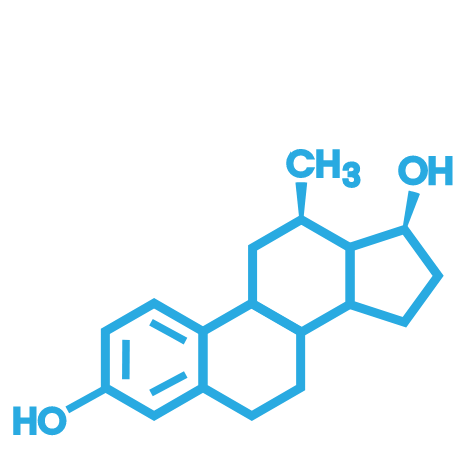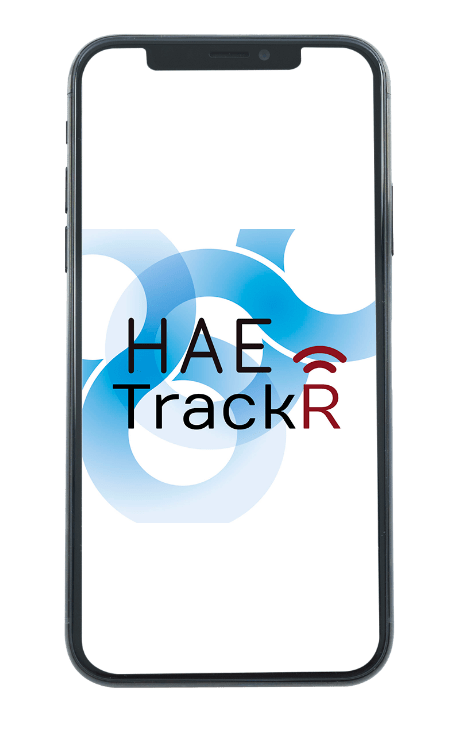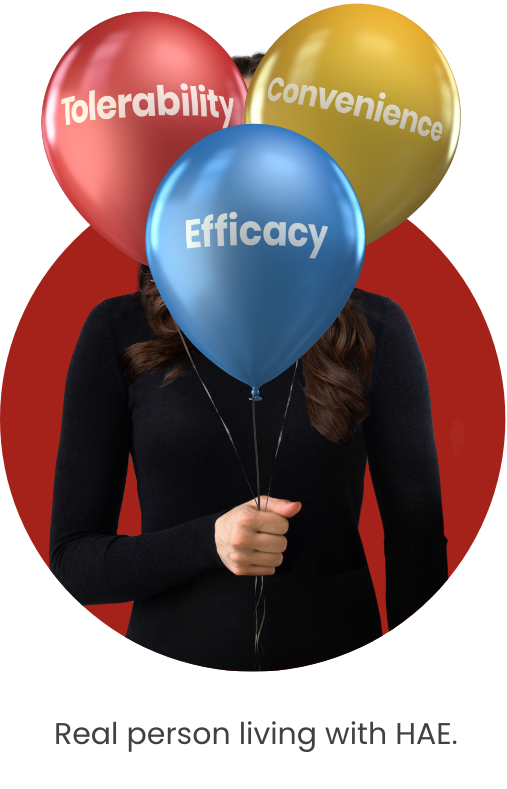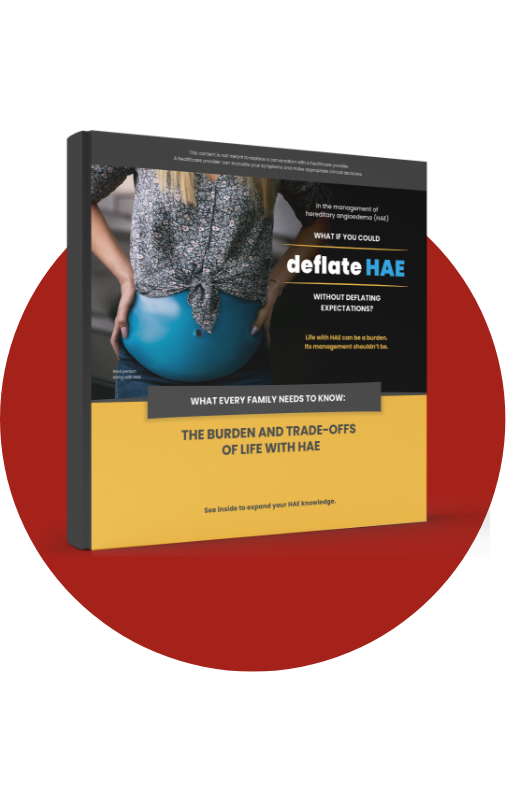Don’t miss what’s next in HAE
For people with HAE Life can be filled with burden
HAE attacks are often disfiguring and debilitating, imposing a significant burden on people’s quality of life
For people with HAE, attacks can affect life in many ways
Emotional burden
How it may feel:
- Some people with HAE may potentially experience near-constant anxiety about their next attack, causing them to cancel plans
- They may experience embarrassment and/or feelings of shame in front of friends, co-workers, or strangers
So if I’m swelling, emotions are heightened, absolutely. There is a sense of panic that occurs during a swell.
Today’s HAE management may come with trade-offs

I’m definitely figuring out my own personal triggers. I know that different hormones will trigger my attacks, so we have to be careful, especially when I was doing IVF. We had to take into consideration the estrogen I was exposed to.
— Emma, real person living with HAE
WOMEN AND HAE
The burden of HAE is higher in women, particularly those of childbearing age

Women may be more affected by HAE due to increased estrogen levels and hormonal changes
Adolescents with menstrual disorders are sometimes prescribed oral birth control pills, which can trigger an HAE attack
Changes in female sex hormones—such as those that occur during puberty, menstruation, use of birth control pills, pregnancy, and menopause—can all affect the frequency and severity of HAE attacks
Family planning decisions may be complicated by the impact of certain treatment options
Discover more resources about women and HAE.
Additional information is available at the HAE International (HAEi) or US Hereditary Angioedema Association (HAEA) website.

Adolescents and HAE A challenging time of life made harder by this unpredictable, disfiguring disease

While the experiences of adults and adolescents with HAE are similar in many ways, there are also unique aspects of being an adolescent with HAE, particularly the impact on schooling as well as social and emotional functioning:
- Signs of HAE usually appear when people are young, either in childhood or as a teenager
- Attacks may become more frequent and severe during and after puberty
In a study of adolescents aged 12 to 17 with HAE:
- Some reported feeling different from their peers and said they had missed childhood events such as sleepovers, parties, and spending time with friends
- HAE attacks caused them to withdraw socially, isolating themselves to avoid potential attacks, or avoiding being seen if they were experiencing swells
- Some reported feeling self-conscious and experiencing episodes of bullying or teasing due to being different or having a visible swell
Sharing information about HAE
Because HAE is so rare, many people have never heard of it— that means your friends and family may not know the basics.
10 facts about HAE
you can share with the people in your life
01
HAE is a rare disease that causes parts of my body to suddenly swell up
02
These attacks can affect different parts of my body, including my face, arms, hands, legs, feet, genitals, or stomach
03
If an attack affects my throat and prevents me from breathing, it can be life-threatening
04
These attacks may be caused by anxiety, injury, surgical procedures, or other reasons. Attacks can even happen from happy excitement, like a wedding or birthday party. Sometimes, the attacks happen for no known reason
05
About two people in 100,000 have HAE in the United States
06
There are about 7,000 people living with HAE in the United States
07
HAE is typically passed down from parent to child
08
HAE is not contagious, and I cannot pass it on to you
09
The attack from HAE is not the same as swelling from an allergic reaction
10
The medications that treat allergic reactions are not effective in treating an HAE attack. One way of treating an attack is to give myself an injection of a medication prescribed by my healthcare provider
Questions to Ask Your Healthcare provider
It can be helpful to take a list of questions to your healthcare provider’s appointment, so you remember everything you want to discuss. The following are some questions you may want to ask.
- What type of HAE do I have?
- How can I avoid having an attack?
- How can I tell when the worst part of the attack has passed?
- What are the chances that I will pass this on to my children?
- Which treatment is right for me?
- Does it matter if I skip a treatment?
- I am experiencing side effects. How can I manage them?
- Are there any current clinical trials, and can I participate?
Track your attacks

Download this app from HAE International (HAEi.org) to:
- Record your treatment
- Track attack development and improvements
- Set reminders for preventive treatment
The third-party resource cited above is for the reader’s information only. Pharvaris does not endorse and is not responsible for the content included in this resource.

Tracking your HAE attacks may help you find patterns over time or notice any sudden changes. After you’ve had an attack and treated it, write down the details in a journal. Recording and sharing details of your attacks may allow for improved discussion with your healthcare provider at your next visit.
- Date of attack
- Location of swelling (hands, feet, stomach, face, etc)
- Time and place symptoms began
- Type of trigger (if known)
- Attack intensity (low, medium, high)
- Was this attack similar to or different from past attacks?
- How long did the attack last?

Burden of HAE Management

Discover helpful resources
References
- Abdulkarim A, et al. Hereditary angioedema. In: StatPearls [Internet]. Treasure Island (FL): StatPearls Publishing; 2023. https://www.ncbi.nlm.nih.gov/books/NBK482266/
- Anderson J, et al. Allergy Asthma Clin Immunol. 2021;17(1):60.
- Angioedema Centers of Reference and Excellence. Who we are. Accessed May 23, 2024. https://acare-network.com
- Aygören-Pürsün E, et al. Allergy. 2013;68(8):1034-1039.
- Aygören-Pürsün E, et al. Orphanet J Rare Dis. 2014;9(99):1-9.
- Azmy V, et al. Allergy Asthma Proc. 2020;41(Suppl 1):S18-S21.
- Banerji A, et al. Allergy Asthma Proc. 2015;36:213-217.
- Banerji A, et al. Ann Allergy Asthma Immunol. 2020;124:600-607.
- Betschel SD, et al. J Allergy Clin Immunol Pract. 2023;11(8):2315-2325.
- Betschel SD, et al. Allergy Asthma Clin Immunol. 2024;20(43):1-8.
- Betschel SD, et al. Allergy Asthma Clin Immunol. 2025;21(25):1-11.
- Broderick L, et al. Orphanet J Rare Dis. 2025;20(16):1-11.
- Busse PJ, et al. N Engl J Med. 2020;382:1136-1148.
- Busse PJ, et al. J Allergy Clin Immunol Pract. 2021;9(1):132-150.
- Castaldo AJ, et al. Ann Allergy Asthma Immunol. 2025 May 23:S1081-1206(25)00258-3.
- Chong-Neto HJ. World Allergy Organ J. 2023;16(3):100758.
- Covella B, et al. Future Pharmacol. 2024;4(1):41-53.
- Data on file, Pharvaris.
- Everyday Health. Speaking hereditary angioedema (HAE): a glossary of terms used to describe symptoms, tests, treatments, and more. Accessed May 23, 2025. https://www.everydayhealth.com/hereditary-angioedema/glossary-of-terms-used-to-describe-symptoms-tests-treatments-and-more/
- Farkas H, et al. Clin Transl Allergy. 2021;11(4):e12035.
- Ferreira G, et al. J Investig Allergol Clin Immunol. 2023;33(5):332-362.
- Firazyr [prescribing information]. Shire Human Genetic Therapies, Inc. Accessed June 6, 2025. https://www.accessdata.fda.gov/drugsatfda_docs/label/2024/022150s016lbl.pdf
- Food and Drug Administration. The voice of the patient – hereditary angioedema. Published May 2018. Accessed May 23, 2025. https://www.fda.gov/files/about%20fda/published/The-Voice-of-the-Patient—Hereditary-Angioedema.pdf
- Geba D, et al. J Drug Assess. 2021;10(1):51-56.
- Gülbahar O. Balkan Med J. 2021;38(2):73-81.
- Haegarda [prescribing information]. CSL Behring GmbH. Accessed June 6, 2025. https://www.fda.gov/media/105611/download
- Hereditary Angioedema Canada. Learning to live with hereditary angioedema. Accessed May 23, 2025. https://haecanada.org/wp-content/uploads/sites/64/2020/10/HAE-Canada-patient-booklet-Updated-2020-v2.pdf
- Hereditary Angioedema International. About HAEi. Accessed May 23, 2025. https://haei.org/about-haei/
- Hereditary Angioedema International. Frequently asked questions. Accessed May 23, 2025. https://haei.org/hae/faq/
- Hsu FL, et al. Allergy Asthma Clin Immunol. 2022;18(64):1-9.
- Jean-Baptiste M, et al. Orphanet J Rare Dis. 2022;17(232):1-12.
- Johnston DT, et al. Allergy Asthma Proc. 2020;41:S43-S46.
- Leibovich-Nassi I, et al. Clin Rev Allergy Immunol. 2021;61:15-28.
- Lima H, et al. Front Allergy. 2023;10(4):1-5.
- Lo SH, et al. Pharmacoecon Open. 2022;6(2):231-239.
- Longhurst HJ, et al. Br J Hosp Med (Lond). 2019;80(7):391-398.
- Lumry WR, et al. Allergy Asthma Proc. 2020;41(Suppl 1):S08-S13.
- Manning ME. Allergy Asthma Proc. 2020;41(Suppl 1):S22-S25.
- Maurer M, et al. Allergy. 2022;77(7):1961-1990.
- Mayo Clinic. Hives and angioedema. Accessed May 23, 2025. https://www.mayoclinic.org/diseases-conditions/hives-and-angioedema/symptoms-causes/syc-20354908
- National Organization for Rare Disorders. Hereditary angioedema. Accessed May 23, 2025. https://rarediseases.org/rare-diseases/hereditary-angioedema/
- Pagnier A, et al. Pediatr Allergy Immunol. 2024;35:e14268.
- Purdue University. College of Science. Career development. Accessed May 23, 2025. https://www.purdue.edu/science/careers/what_can_i_do_with_a_major/Career%20Pages/immunologist.html#:~:text=Immunologists%20are%20research%20scientist
- Radojicic C, et al. Allergy Asthma Proc. 2021;42(3):S4-S10.
- Riedl MA, et al. Ann Allergy Asthma Immunol. 2017;119(1):59-64.
- Riedl MA, et al. Allergy. 2020;75(11):2879-2887.
- Riedl MA, et al. Allergy Asthma Proc. 2021;42:S17-S25.
- Savarese L, et al. Allergy Asthma Proc. 2021;42(1):e1-e7.
- Shamanaev A, et al. Front Physiol. 2023;14:1146834:1-13.
- Smith TD, et al. Ann Allergy Asthma Immunol. 2024;133:380-390.
- Soteres DF, et al. Clin Case Rep. 2021;9(11):e05086.
- Takhzyro [prescribing information]. Dyax Corp. Accessed June 6, 2025. https://www.accessdata.fda.gov/drugsatfda_docs/label/2023/761090s010lbl.pdf
- US Hereditary Angioedema Association. Conquering hereditary angioedema together. Accessed May 23, 2025. https://www.haea.org/
- US Hereditary Angioedema Association. About hereditary angioedema. Accessed May 23, 2025. https://www.haea.org/pages/p/what_is_hae#:~:text=Symptoms%3A%20HAE%20Attacks,those%20in%20the%20same%20family%204
- US Hereditary Angioedema Association. Treatments. Accessed May 23, 2025. https://www.haea.org/pages/p/treatments
- Wedner HJ, et al. J Allergy Clin Immunol Pract. 2021;9(6):2305-2314.e4.
- Zacek L. Nursing. 2022;52(12):44-50.
- Zanichelli A, et al. Ann Allergy Asthma Immunol. 2016;117:394-398.
- Zuraw BL. World Allergy Organ J. 2010;11:S25-S28.
- Zuraw BL, et al. Allergy Asthma Proc. 2025;46:209-217.




